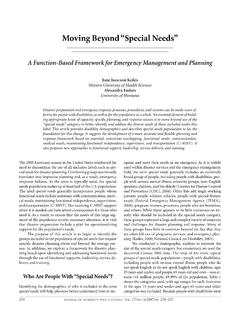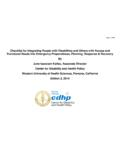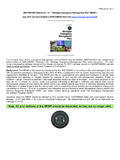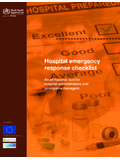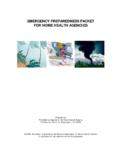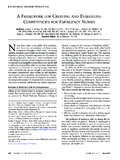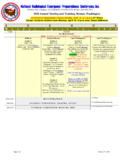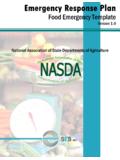Transcription of Moving Beyond “Special Needs”: A Function Based …
1 Moving Beyond Special Needs : A Function Based Framework for emergency Management and Planning By June Isaacson Kailes and Alexandra Enders May 2006 June Isaacson Kailes, Associate Director Center for Disability Issues and the Health Professions Western University of Health Sciences 6201 Ocean Front Walk, Suite 2 Playa del Rey, California 90293-7556 310 821 7080, FAX 310 827 0269, TTY 909 469 5520 || Alexandra Enders, Senior Research Associate/Policy Analyst Research and Training Center on Disability in Rural Communities University of Montana 52 Corbin Hall Missoula, MT 59812 , FAX , TTY || DO NOT COPY or DISTRIBUTE. Document in press, Journal of Disability Policy Studies, special issue: Disaster Preparation and emergency Response for People with Disabilities: Research, Policy and Practice. Distributed with permission to participants at Working Conference on emergency Management and Individuals with Disabilities and the Elderly, June 28-30, 2006, Washington, Moving Beyond Special Needs : A Function Based Framework for emergency Management and Planning, (2006) Kailes & Enders.
2 DO NOT DISTRIBUTE, PUBLICATION IN PRESS Page 2 of 20 Moving Beyond Special Needs : A Function Based Framework for emergency Management and Planning By June Isaacson Kailes and Alexandra Enders Abstract: Disaster preparation and emergency response processes, procedures and systems can be made more effective for people with disabilities, as well as for the population as a whole. An essential element of building appropriate levels of capacity is to move Beyond use of the "special needs" category, which makes up more than 50% of the population. This paper suggests development of a more accurate and flexible framework Based on essential functional needs: maintaining functional independence, communication, supervision, medical, and transportation. It also suggests new approaches to leadership, service delivery and training. Key words: communication access, disaster and emergency services, independent living, maintaining functional independence, medical needs, people with functional limitations, people with disabilities, special needs, team building, and transportation.
3 CONTENTS: 1. Introduction 2. Demographics Who Are People with Special Needs? Who Are People with Disabilities? Defining Functional Limitations Broadly People with Functional Limitations Are Part of Every Segment of the Population 3. Better Equipped to Serve All: Using a Function Based Approach A Function Based Framework for emergency Management and Planning Medical needs Communication needs Supervision needs Maintaining functional independence needs Transportation 4. Improving Readiness Involves Leadership, Service Delivery, Expertise, and Training 5. Conclusion 6. References Moving Beyond Special Needs : A Function Based Framework for emergency Management and Planning, (2006) Kailes & Enders. DO NOT DISTRIBUTE, PUBLICATION IN PRESS Page 3 of 20 1. Introduction The special needs population is often viewed as a homogeneous group. This practice, although understandable, is dangerous given this group s significant size. Lumping groups together and using an ambiguous special needs label translates into vague planning, which results in response failures.
4 The 2005 Gulf states experiences reinforce and underscore the necessity of disaggregating this diverse group and devising a more effective and sophisticated framework in order to meet health, safety and survival needs. A Function Based framework allows emergency managers to define, locate, reach and plan comprehensively for managing resources and individuals specific functional needs of people. It helps avoid planning that relies on diagnostic labels and definitions of disability used primarily for programmatic eligibility categories which are often not helpful in preparing for, responding to and recovering from an emergency . 2. Demographics Who Are People with Special Needs? The term special needs is widely used within disaster services and the emergency management field. It generally includes an extremely broad group of people, including people with disabilities, people with serious mental illness, minority groups, non-English speakers, children, and the elderly (Centers for Disease Control and Prevention, 2004).
5 Other lists also add single working parents, people without vehicles, people with special dietary needs (FEMA 2004), pregnant women, prisoners, people who are homeless, etc. While there appears to be little consensus on exactly who should be included in the special needs category, our data show that these groups represent a large and complex variety of concerns and challenges for disaster planning and response. Many of these groups have little in common Beyond the fact that they are often left out of programs, services and emergency planning. (Kailes, 2000; National Council on Disability, 2005). The first author frequently claims that the special needs category may include almost half the population; therefore we did a demographic analysis to determine the actual size of this category. For consistency, decennial Census 2000 data were used. The total of the most typical groups of special Moving Beyond Special Needs : A Function Based Framework for emergency Management and Planning, (2006) Kailes & Enders.
6 DO NOT DISTRIBUTE, PUBLICATION IN PRESS Page 4 of 20 needs populations - people with disabilities, including people with serious mental illness; people who do not speak English or do not speak English well; children, age 15 and under, and people 65 years old and over - was almost 141 million people, of the population. Table 1 shows the categories used, with age ranges for each. Everyone age 15 and under, and age 65 and older, was included. Since people with disabilities were included in the 15 and under, and 65 and older age categories, only the population 16-64 was included in the disability category. This was necessary to avoid over counting when an individual, such as a 70 year old person with a disability, was in more than one category. Census data were not available for 16 and 17 year olds who do not speak English or do not speak English well, so we were only able to include people age 18-64 in this category. Those age 65 and over would already be included in the elderly age category.
7 Table 1 . emergency Management Special Needs Groups: Percentage of the US Population Population category Total % of total population (281,421,906) Children, age 15 and under 64,272, Elderly, age 65 and over 34,991, Speak English not well , age 18-64 5,703, Speak English not at all , age 18-64 2,575, Noninstitutionalized population with a disability, age 16-64 33,153, Total special needs population 140,696, Data Source. Census Bureau, Census 2000 Summary File 1: table P2, total population; table PCT12, total population sex by age. Summary File 3: table P19, age by language spoken at home by ability to speak english for the population 5 years; over and table P42, sex by age by disability status for the civilian noninstitutionalized population age 5 years and over. In addition to the typical special needs group, including the entire institutionalized population, about 4 million people (Census 2000, Summary File 1, Table PCT16) brings the percentage of the population in the special needs category to People live in institutionalized group quarters because there is a perceived ongoing need for medical care and/or supervision.
8 The residents of nursing homes, hospitals/wards, hospices, and schools for the handicapped , correctional institutions, state prisons, halfway houses, etc. have medical or supervision needs that will continue in an emergency . We Moving Beyond Special Needs : A Function Based Framework for emergency Management and Planning, (2006) Kailes & Enders. DO NOT DISTRIBUTE, PUBLICATION IN PRESS Page 5 of 20 did not include the almost quarter million individuals who live in group homes, because in the 2000 Census, they were counted in noninstitutionalized group quarters, and already included in the Census tables for people with disabilities. Minority groups are included in some lists of special needs populations. The United States continues to grow in racial, ethnic and diversity. California, Hawaii, New Mexico, and Texas are majority-minority states, in which a majority of the population differs from the national majority population. Arizona, Georgia, Maryland, Mississippi, and New York have minority populations of 40 percent.
9 (U. S. Census Bureau 2005). The 2000 Census reports over 70 million minority individuals if the white alone population is subtracted from the total population. Since minorities were included in the age categories 15 years and under, and 65 and older, only the population age 16-64 should be counted here. Further adjusting for minority group individuals who do not speak English and are counted in the language category, leaves 35 to 40 million minority group individuals in the 16-64 year old category. Other groups with Function Based needs that may not be captured in this analysis include people who are morbidly obese, pregnant women, people on kidney dialysis, and people living in zero vehicle households: Obesity. People with morbid obesity can present a range of challenges in emergency management, from adequate rescue transportation modes to beds and chairs that will support them. The American Obesity Association reports approximately 9 million adult Americans as morbidly obese, defined as having a Body Mass Index (BMI) of 40 or more.
10 (American Obesity Association, ) The prevalence of morbid obesity in 2003-2004 was in men and in women. (Ogden, et al. 2006). Pregnancy. The American Pregnancy Association ( ) reports there are approximately 6 million pregnancies every year in the United States. Pregnant women may have no needs Beyond the need to avoid exposure to toxins, or may be about to give birth and need medical assistance. Kidney Dialysis. The United States Renal Data System at the National Institutes of Health (2003) reports that in 2001, there were 287,494 residents receiving kidney dialysis. Zero vehicle households. The 2000 Census (Summary File 3, Table H44) reports that million households, out of about 110 million total occupied households, did not have a vehicle. About Moving Beyond Special Needs : A Function Based Framework for emergency Management and Planning, (2006) Kailes & Enders. DO NOT DISTRIBUTE, PUBLICATION IN PRESS Page 6 of 20 million of these households are in rural areas; the remainder are urban.
